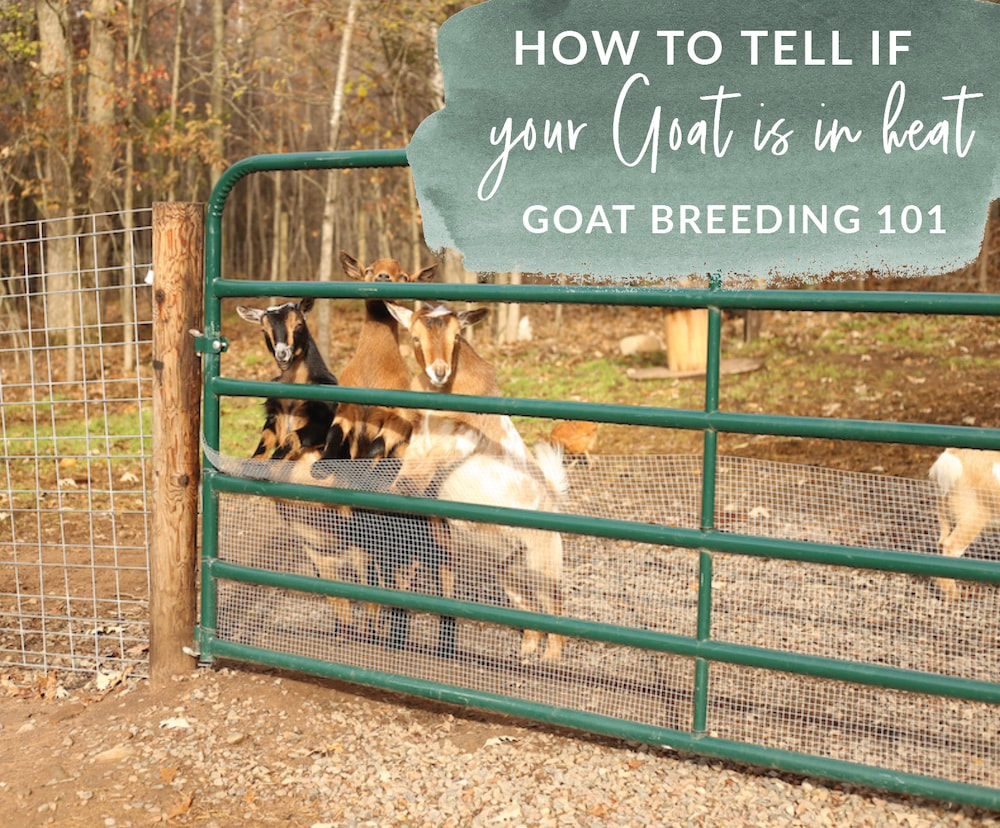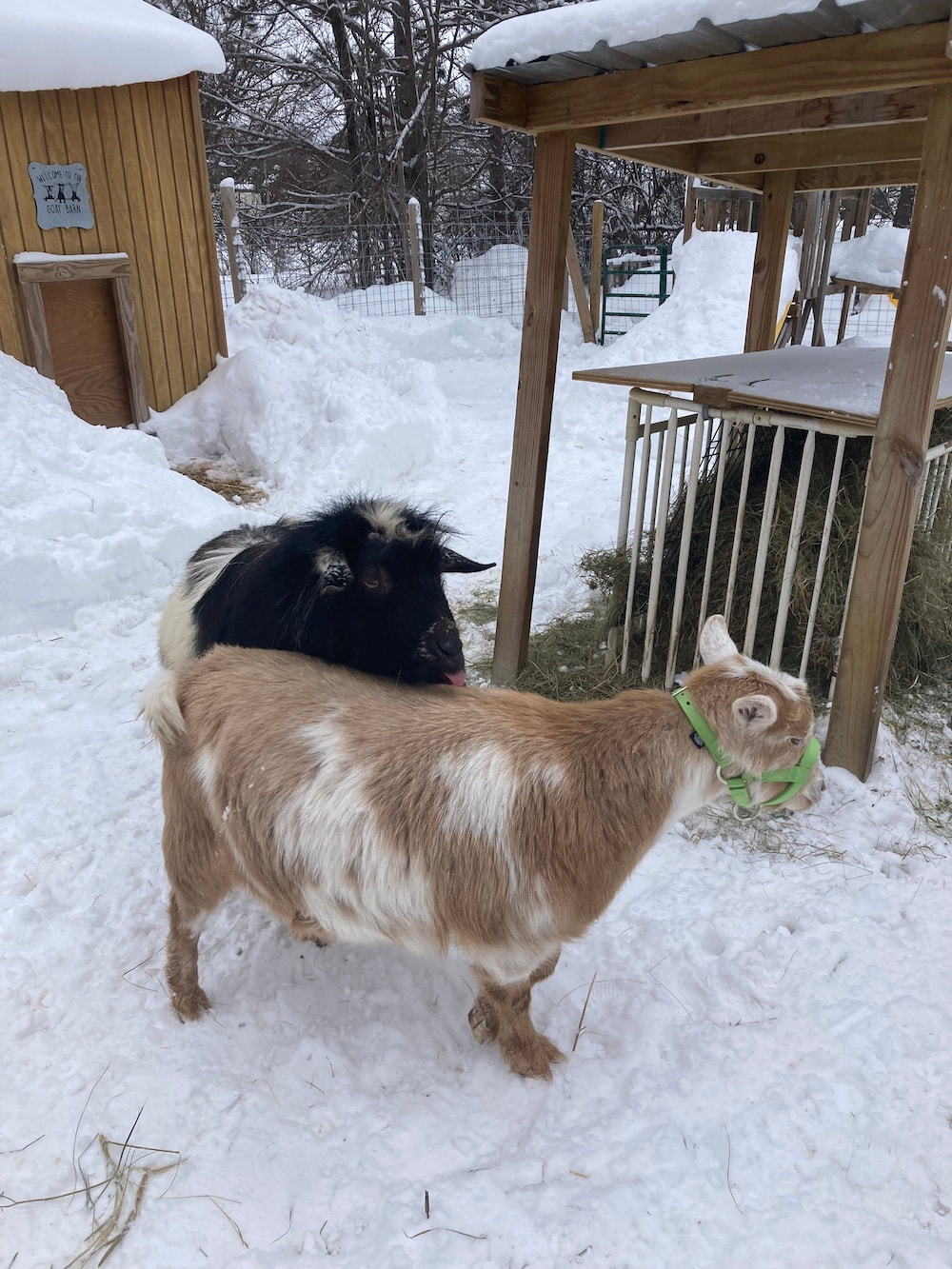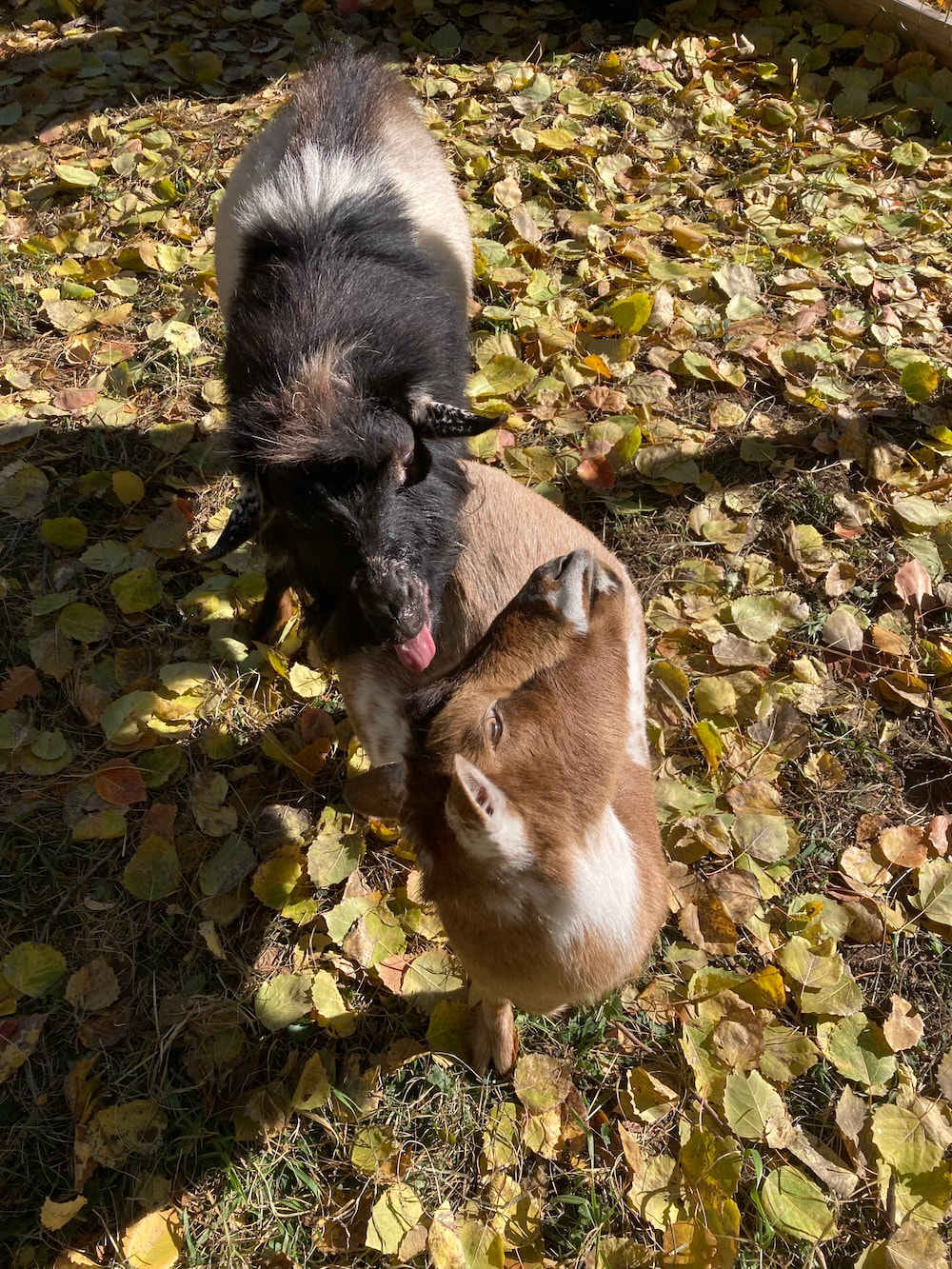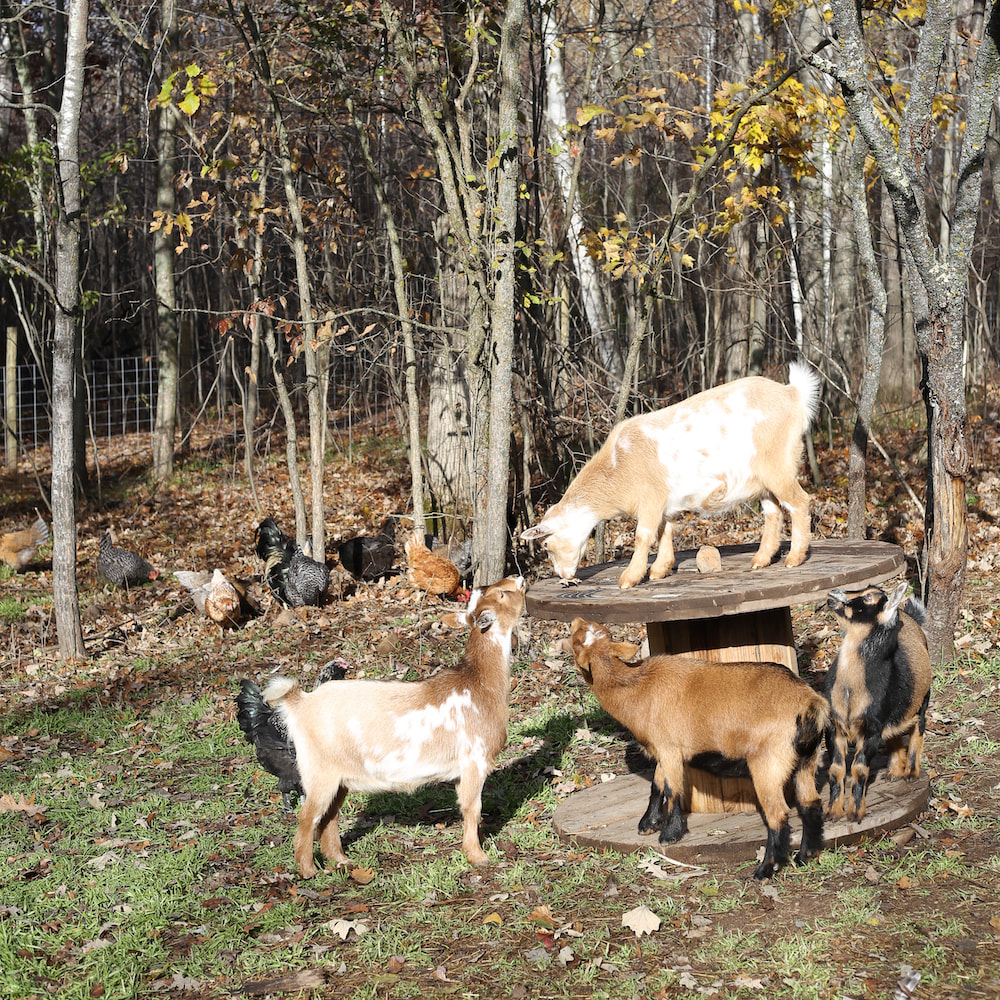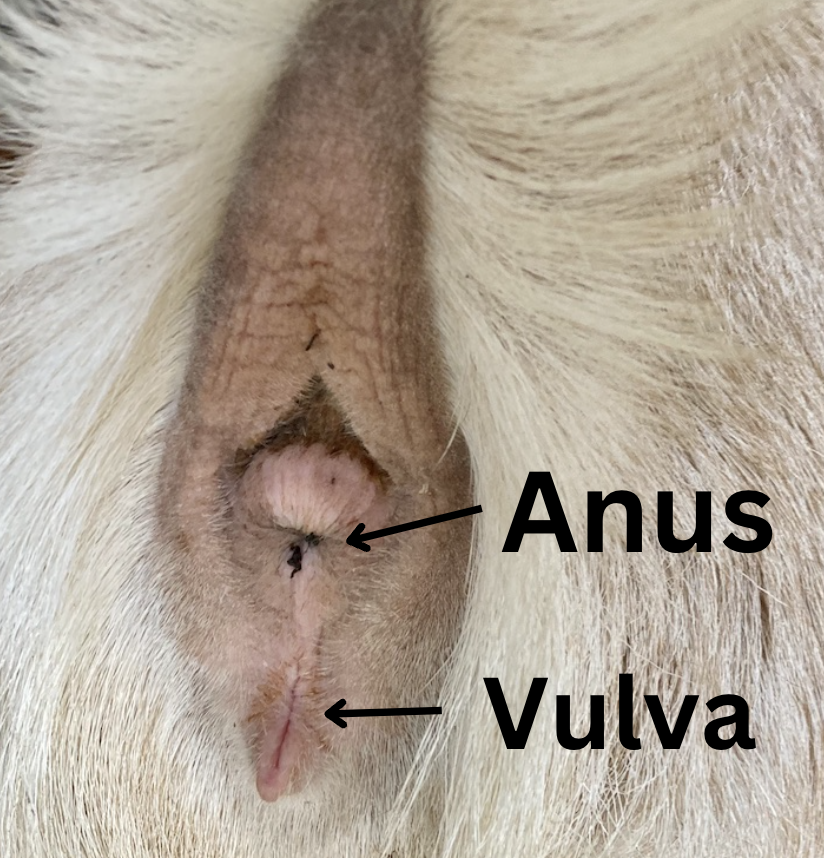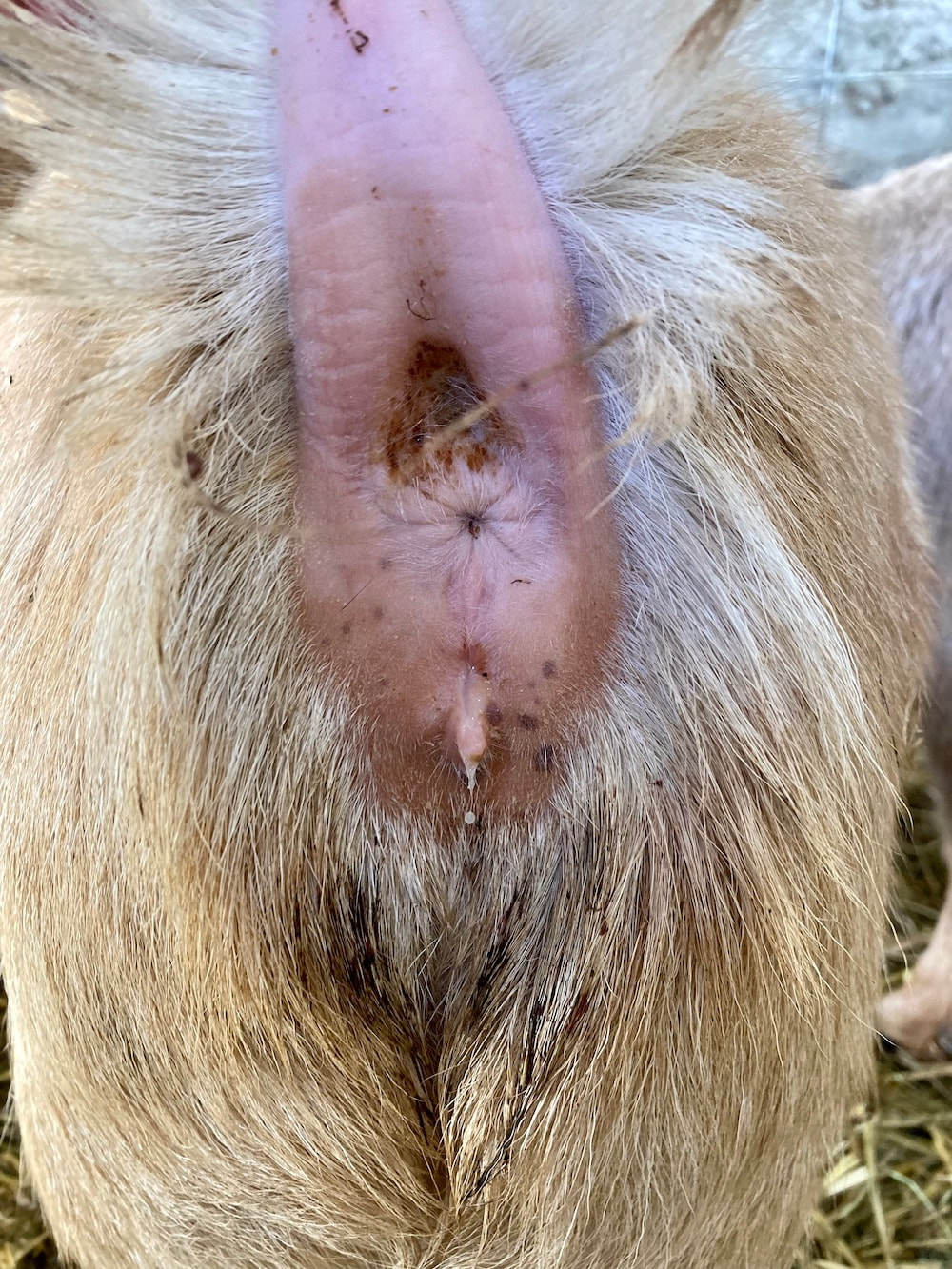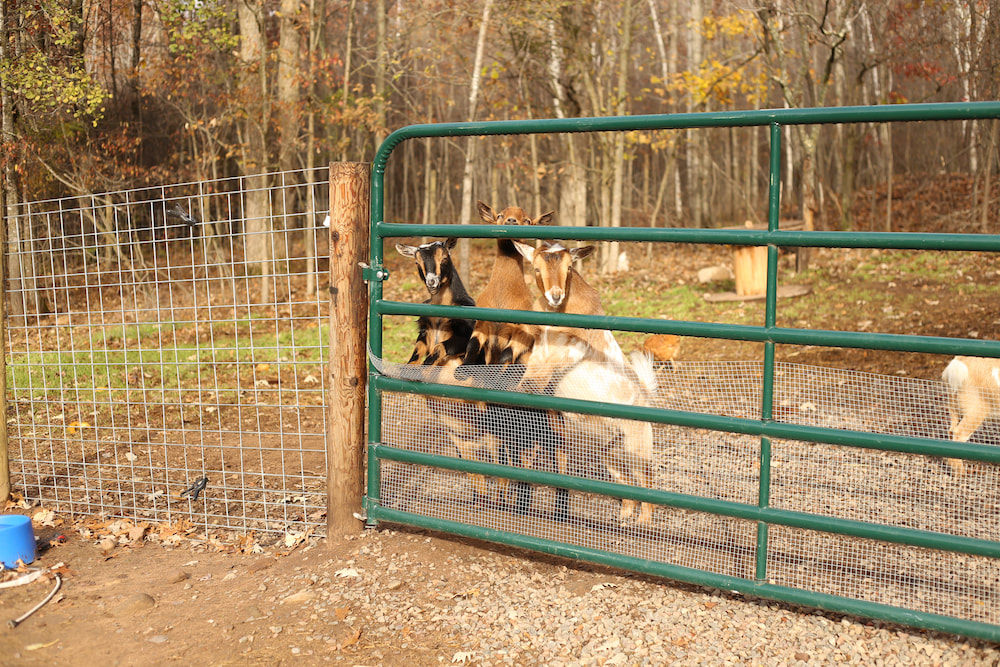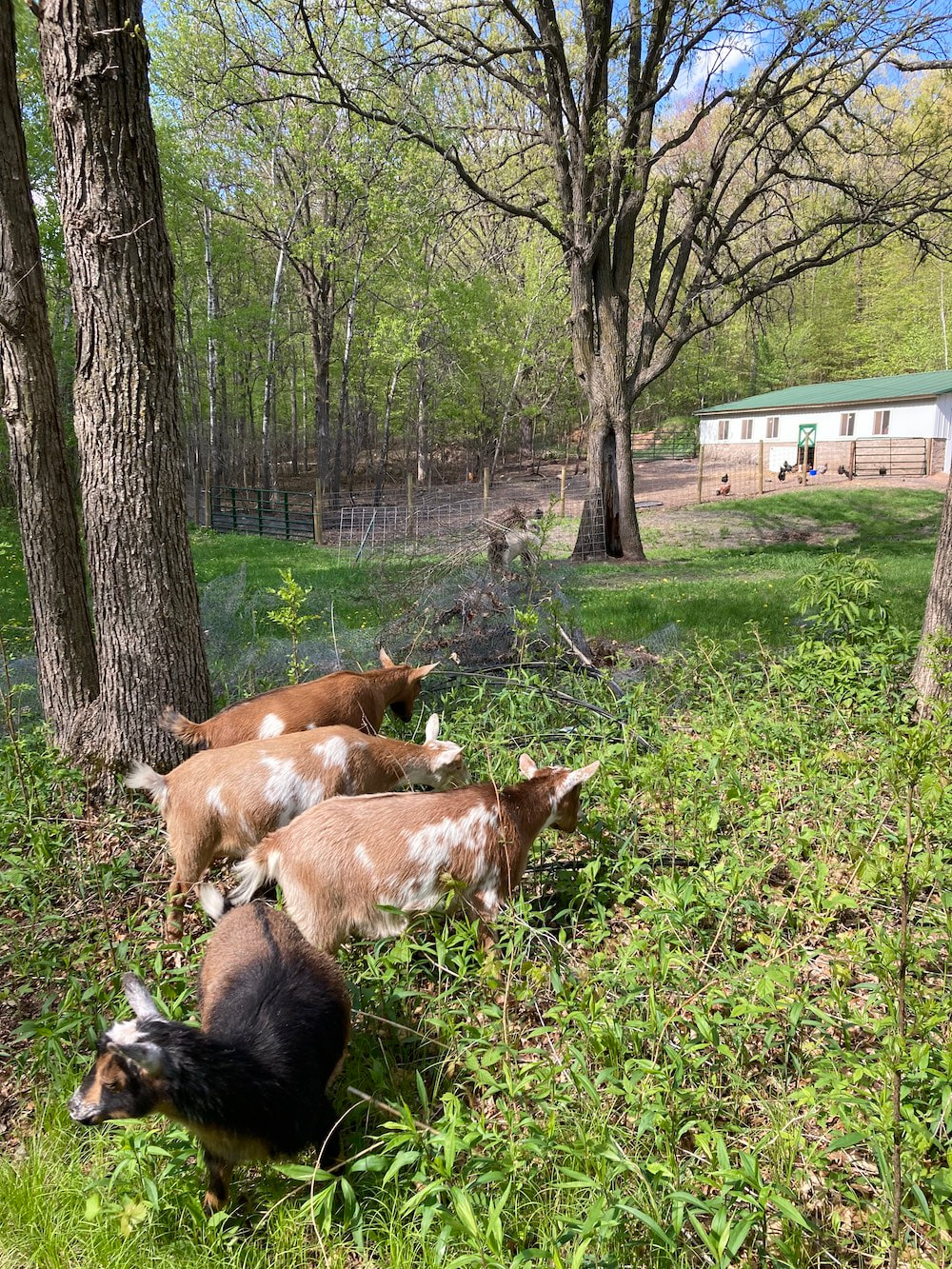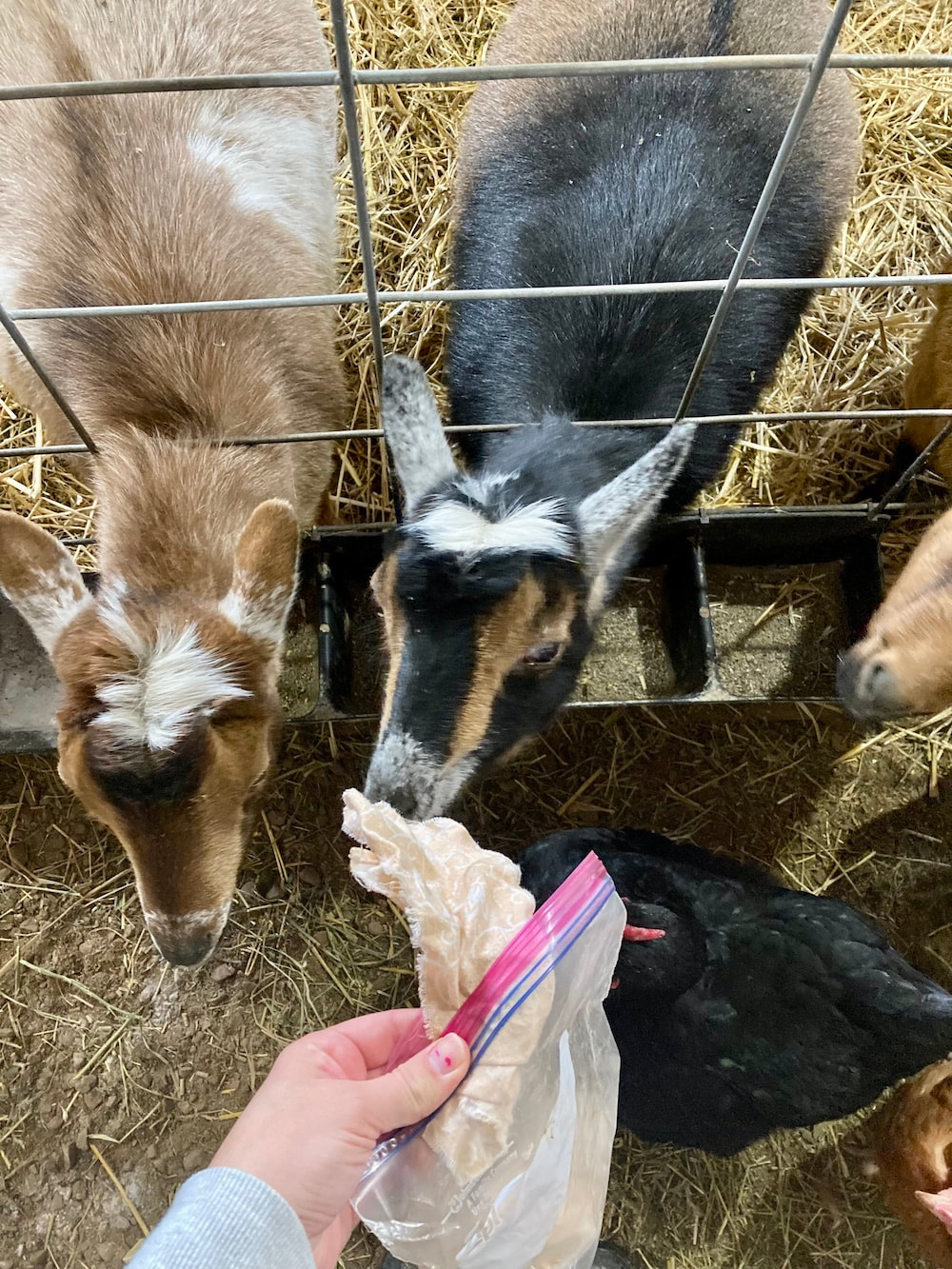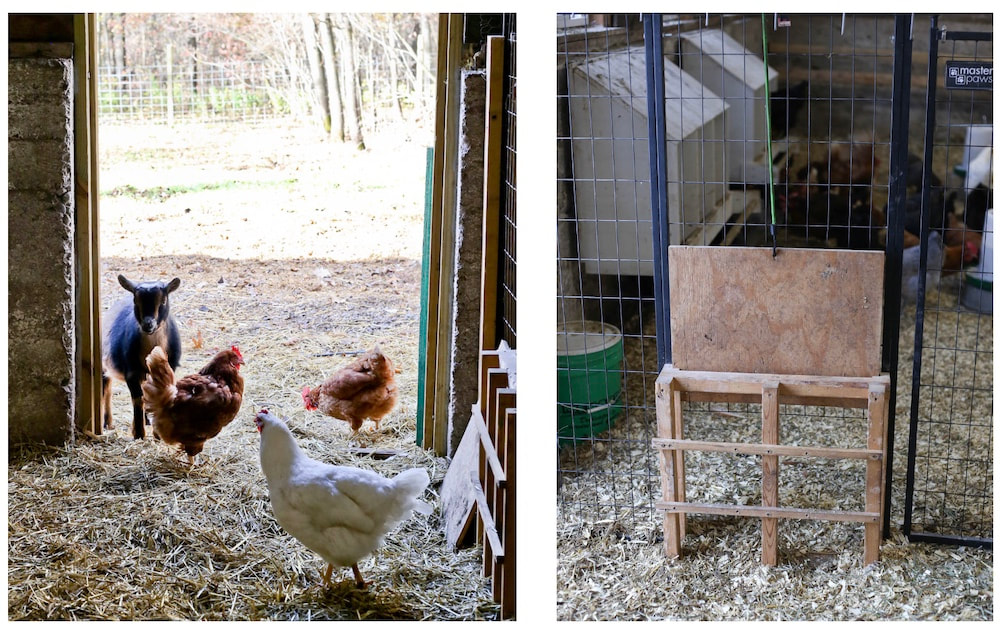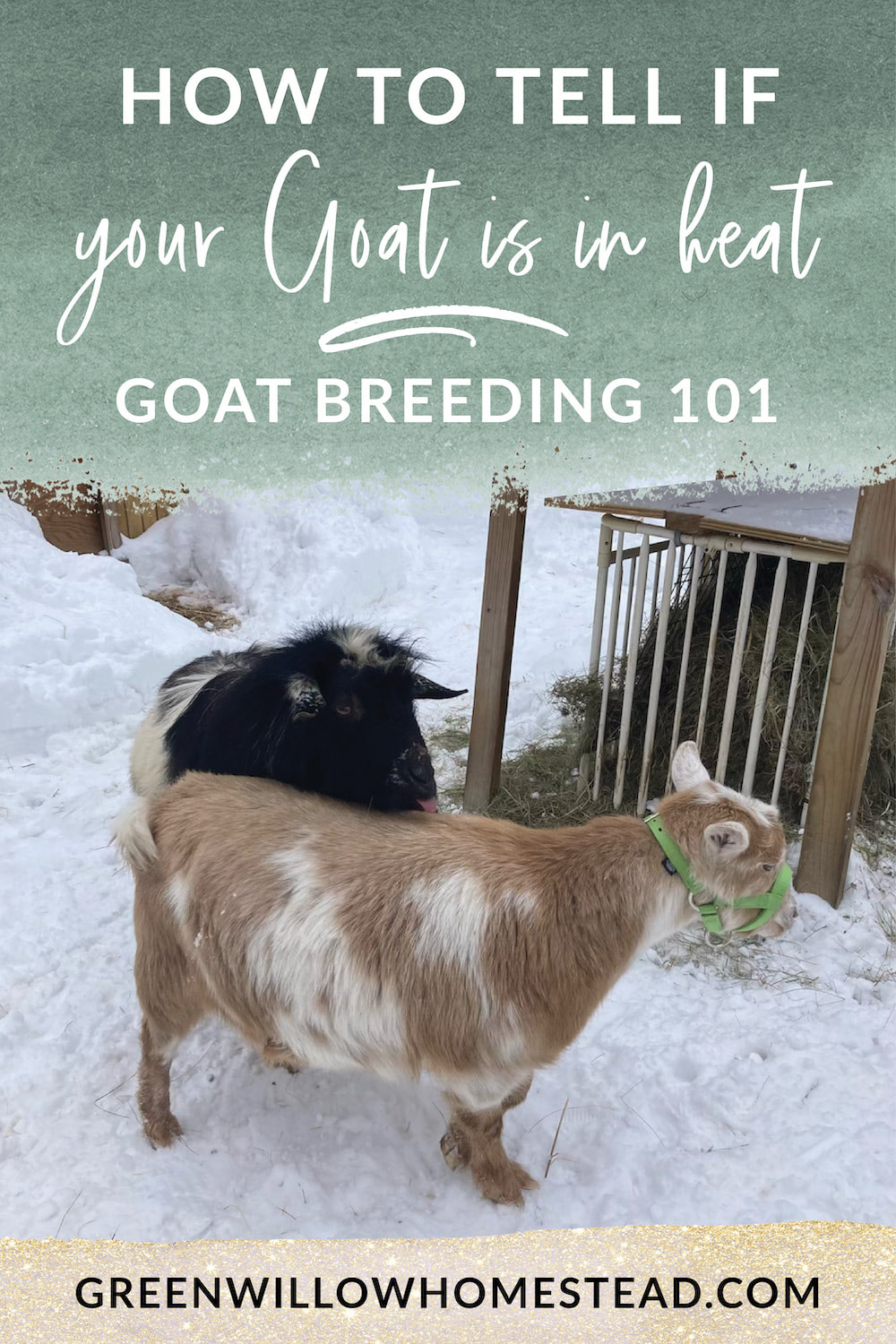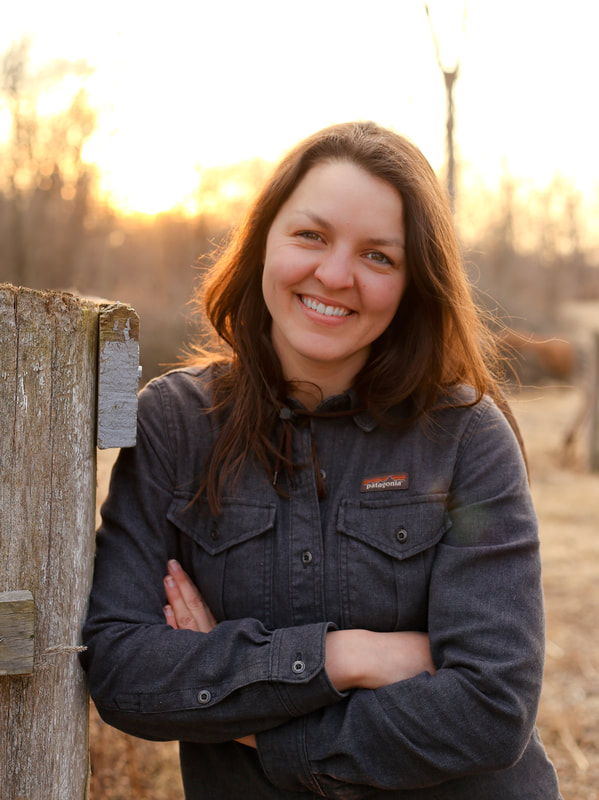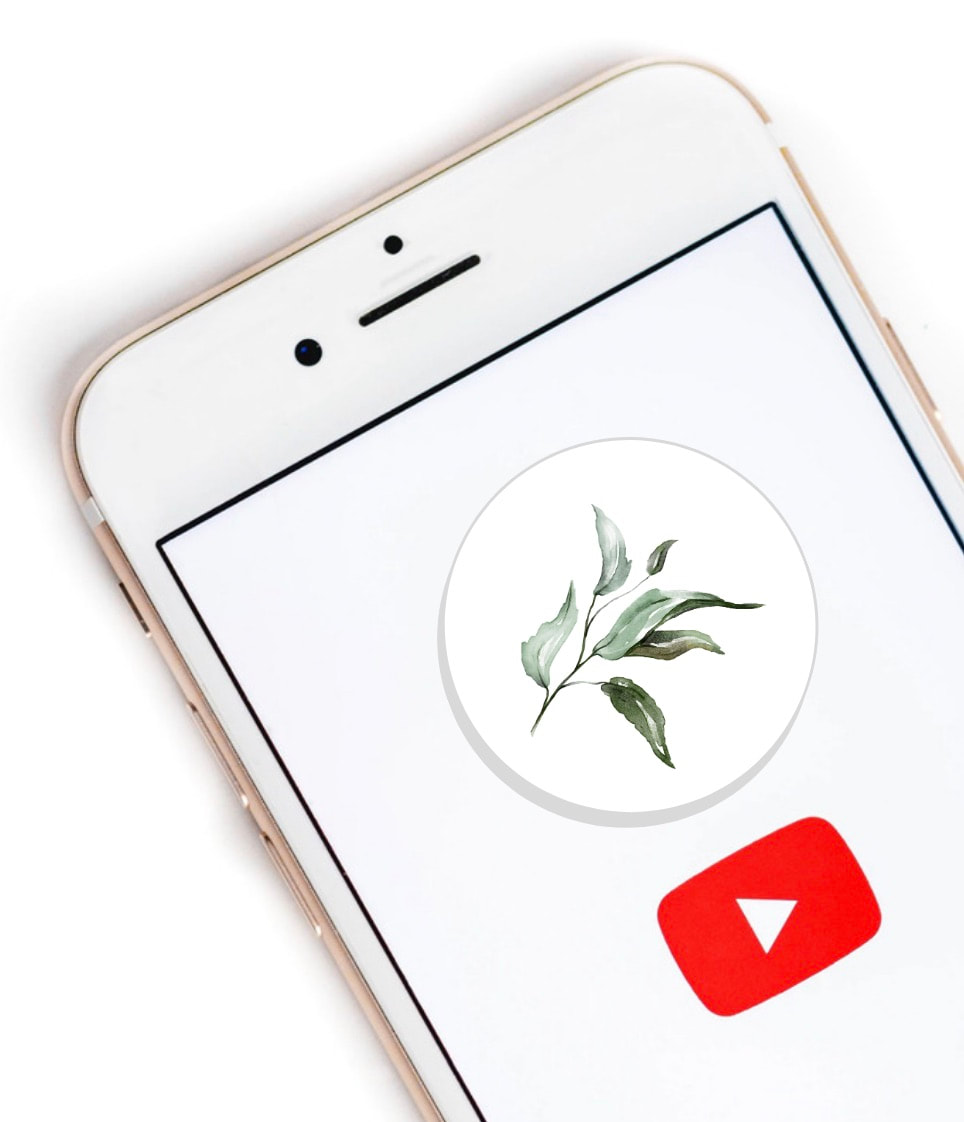|
Breeding your dairy goats is the first step towards your farm or homestead’s first batch of fresh, healthy, raw goat's milk. But what many beginner goat owners don’t realize is you have to learn how to detect when your goat is in heat before you breed her. With most goats, the window for their standing heat cycle is 12-24 hours, and to the untrained eye, it can be extremely challenging to know when that window of time has happened! In this blog post, I will share with you all the tips and tricks on how to know when your goat is in heat so you can breed your goats successfully.
What is a goat’s heat cycle?
Just like humans who want to get pregnant, a goat must be ovulating in order to breed. Without ovulation and the release of a doe’s eggs, the buck’s sperm has nothing to inseminate! As a goat’s ovulation ramps up over the course of her cycle, she will enter what’s called estrus, or “standing heat.” This phrase literally means your goat will “stand” to be mounted by a buck or even other does. At any other point in her cycle, a goat will not appreciate being mounted and will not stay still and stand for the buck.
How does a goat's heat cycle work?
Your doe will only be in standing heat for 12 - 24 hours before she is no longer fertile. A heat cycle lasts 18 - 21 days for most goats, so you can see why it's imperative to know the signs of heat, so you don’t have to wait a whole month to try breeding your goat again.
Most dairy goat breeds begin their heat cycles in the fall from late August through January. The shorter day lengths, AKA less daylight, ultimately trigger heat cycling. But! There are some breeds, like the Nigerian Dwarf, which heat cycle all year long regardless of day length. This is a major plus because, depending on your climate, you may not want babies in the late winter or early spring. What are the signs your goat is in heat?
Knowing the signs and symptoms that you doe is in standing heat is the make or break in having successful breeding. It took me three heat cycles to begin to understand what to look for and when my girls are genuinely in standing heat. The learning curve can be steep, especially if you have to drive a significant distance to find a buck for a mounting fee, only to realize your doe doesn’t feel like standing for him to mount her!
Because all goats are different, you may find that your doe exhibits only a few of the following symptoms. These signs are by no means an all-or-nothing list - sometimes, you only get just one or two of the following signs, and you have to act fast. First, a super simple anatomy lesson for your does' rear end:The best sign of a goat in heat: Cervical mucus
Just like humans, the presence of cervical mucus is one of the best indicators that your doe is in standing heat. Cervical mucus is what your goat’s body excretes to help the buck’s sperm reach the egg in time for insemination and implantation.
You’ll want to start checking your doe’s vulva (see the diagram above) for signs of a clear or white discharge. As for the amount of mucus, there can be just a few drops (like the example picture below) or a gushing waterfall. I’ve found that you need to be careful not to confuse cervical mucus with urine, especially after a goat has just peed. This is because the vulva is also the opening for urine to exit your doe. If I suspect that cervical mucus is present, I’ll begin to look for the additional signs listed below! The next best sign of a goat in heat: Tail flagging
Tail flagging is such an easy sign to spot, but many goat owners know that goats generally love to communicate with their tails. What you are looking for is a doe’s tail that points upwards and slightly to the side, then flicks and flits when she walks around, talks to you, and when you interact with her. I like to think of it as a doe batting her eyelashes!
The biological purpose of tail flagging is to air out a doe’s scent to a buck and make her vulva physically available for the buck’s penis. If her tail were in the way, there wouldn’t be any baby-making! The next best sign of a goat in heat: Talking
As with tail flagging, many goat owners say some of their goats are generally very chatty. What you are looking for is a goat that is calling out to you over and over again. If you have a very chatty goat in general, look for *more* talking than usual.
I’ll never forget when I heard my usually quiet, shy, and sweet doe, Banana, braying her head off from all the way across the barnyard. I could hardly believe the change in her personality, but then looking at the additional signs listed here - I knew almost instantly she was in standing heat, and I had to act fast if I wanted to breed her. So if you have a chatty goat suddenly, confirm she is in heat with these additional signs and get her to that buck for breeding. Another good sign your doe is in heat: A pinker or more reddish vulva
Since you will be looking at your goat’s rear end quite a bit when you intend to breed her, take note of the color of her vulva throughout her cycle. You will notice that as she approaches standing heat, the skin around the vulva will get much more pink and red. This color change happens due to the increase in blood flow to the area and also creates a more attractive “target” for the buck.
Please note: This is a more challenging sign to spot if you have a doe with darker skin, so remember you have other signs to rely on! A rarer sign your doe is in heat: Acting “bucky"
I didn’t understand what this sign genuinely meant until I met a buck and saw how it interacted with other goats. For the longest time, I thought my doe, Nutmeg, was just a bossy girl - she would head butt, chase, and mount her herd mates - but then I realized that was her particular sign that she was in heat! None of my other does do this when they are in heat, but for Nutmeg, when she starts talking more, bossing everyone around, and tail flagging - it means she is ready for action.
All of these signs are great signifiers that your doe is ready or nearly ready for breeding. But there is one last thing I would do to confirm if my girls were ready for breeding - and that was to use a buck rag. What is a buck rag and how do you use it?
Bucks are notorious for being extremely smelly. As much as we as humans don’t appreciate that bucky smell, does love it as they ramp up their heat cycle. Chock full of pheromones, the odor a buck emits helps your does’ estrus come on good and strong. So what to do if you don’t have a buck on your homestead or farm? The answer is to use a buck rag!
By taking any old washcloth or towel and rubbing it all over a stinky buck, you can bring that smell with you to introduce to your does. The way your does then interact with that smell on the buck rag will almost always confirm if your doe is ready for breeding. So how do you use a buck rag? First and foremost, to preserve the smell and keep your barn from smelling overwhelmingly like a buck - keep the buck rag in a double ziplock bag or sealed coffee can. Each morning when you do chores, give your does a chance to smell the buck rag and observe carefully how they react. If a doe snorts and turns her head, backs off immediately, or acts completely uninterested - she isn’t in heat. If, on the other hand, your doe noses the rag, smells it for longer than five seconds, and then squats and pees - she is getting close to being in heat or is already there. When I’m approaching the time of year I like to breed my does, I like to use the buck rag each morning for their 21-day cycle to help monitor my does and let them know a visit with a buck is approaching. This also allows you to see their interest in the rag over time, rather than try to shoot in the dark. Ultimately - I like to see some or all of the other signs I listed above, and then gauging their reaction to the buck rag is the final say in whether it’s time to load them up to visit the buck for breeding. My goat is in heat! Now what?
It’s exciting times when your goat is finally ready to be bred. Good work on reading the signs and confirming she is ready to see her Romeo. Be sure to check back and read the next post in my Goat Breeding 101 Series: “How to Breed Your Goat.”
Happy reading and my fingers are crossed for you and all your future kids! Are you thinking about Keeping Goats and Chickens Together?
|
Meet Kelsey,Thanks for stopping by Green Willow Homestead! From chicken rearing to composting, we've got our hands full and we love sharing what we've learned along the way. Follow along as we turn the 80 acres we call home into a farm that serves its community and a homestead that nourishes us throughout the seasons. Grab the EbookListen in!FREE Guide!Tune in to our YouTube ChannelInspirationsCategories
All
Favorite Books of 20241. Erosion
2. Braiding Sweetgrass 3. As Long As Grass Grows 4. The Small Scale Poultry Flock 5. The Zero Waste Solution Archives
April 2024
|
FOLLOW KELSEY ON INSTAGRAM!
As an Amazon Associate I earn from qualifying purchases. |

